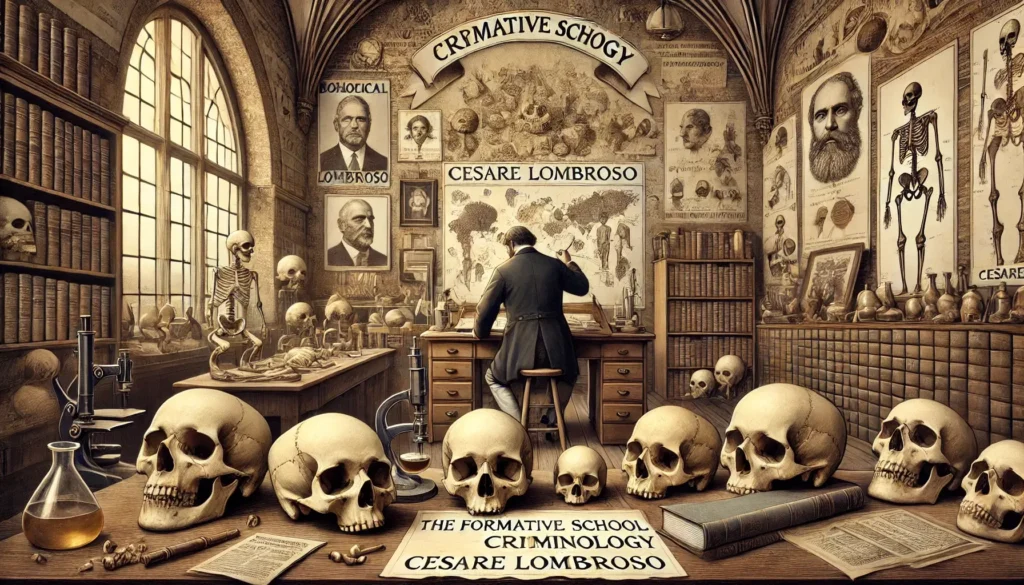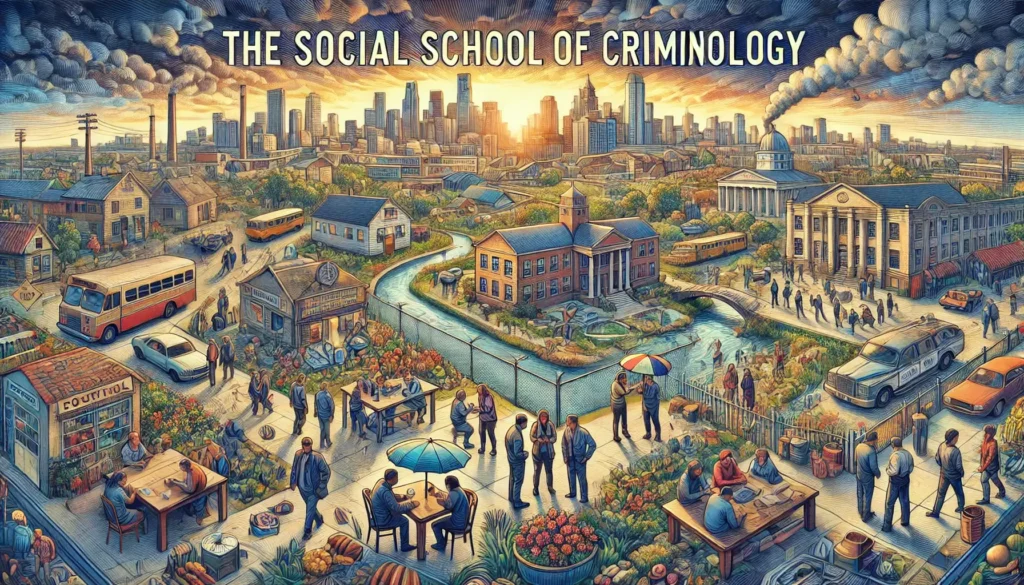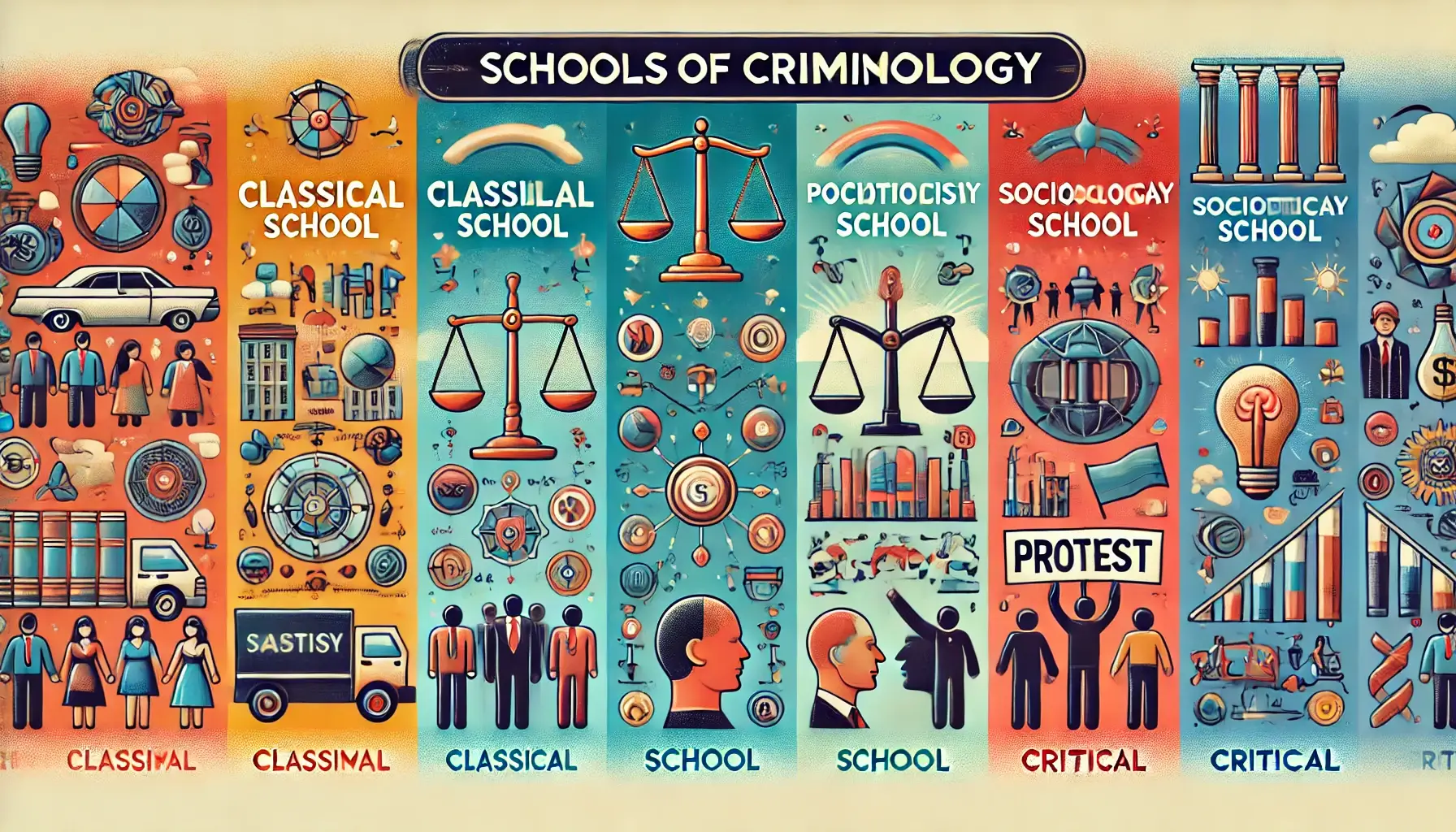Criminology, as a multidisciplinary field, has evolved through various theoretical schools that attempt to explain the causes and nature of criminal behavior. Among the most significant are the Formative School, the Psychoanalytic School, and the Social School. Each of these schools has contributed uniquely to understanding crime, its motivations, and possible prevention methods. This article explores these schools in detail, examining their foundations, key theories, and implications for criminology and criminal justice.
I. The Formative School of Criminology
The Formative School, also known as the Positivist School, marked a significant departure from the classical approach to criminology. This school emphasized scientific methods and biological determinism as central to understanding criminal behavior.
1. Historical Background
The Formative School emerged in the late 19th century as a response to the limitations of the Classical School, which focused primarily on free will and rational choice. Cesare Lombroso, often referred to as the father of modern criminology, played a pivotal role in shaping this school with his groundbreaking ideas.
2. Key Theories and Concepts
- Atavism: Lombroso’s theory of atavism suggested that criminals are evolutionary throwbacks, possessing primitive traits that predispose them to criminal behavior. He identified physical characteristics such as asymmetrical faces and elongated jaws as indicators of criminal tendencies.
- Biological Determinism: The Formative School emphasized the role of genetics and biological factors in shaping criminal behavior. Studies on hereditary criminality, conducted by Lombroso and his contemporaries, reinforced the notion that crime could be rooted in biology.
- Multiple Causation: Enrico Ferri expanded Lombroso’s ideas by introducing the concept of multiple causation. He argued that criminal behavior results from an interplay of biological, psychological, and social factors.
- Natural Crime: Raffaele Garofalo contributed the idea of natural crime, referring to acts that violate universal moral sentiments such as honesty and compassion.
3. Contributions and Criticisms
The Formative School’s emphasis on scientific methods brought rigor to criminological studies. However, its deterministic view faced criticism for ignoring the social and environmental contexts of crime. Modern criminology has integrated its insights with broader perspectives, recognizing the complexity of criminal behavior.

II. The Psychoanalytic School of Criminology
The Psychoanalytic School draws heavily on the psychological theories of Sigmund Freud and his successors. This school focuses on the unconscious mind and its influence on behavior, including criminal actions.
1. Foundations in Freudian Theory
- The Structure of the Psyche: Freud’s model of the human psyche—comprising the id, ego, and superego—provides a framework for understanding criminal behavior. The id represents primal desires, the superego embodies moral standards, and the ego mediates between the two.
- Unconscious Motivations: According to Freud, unresolved conflicts in the unconscious mind can manifest as deviant or criminal behavior. For example, childhood trauma or repressed desires may lead to acts of violence or theft.
2. Key Concepts in Criminology
- Guilt and Crime: Some psychoanalysts argue that guilt plays a paradoxical role in criminal behavior. An individual may commit a crime to alleviate subconscious feelings of guilt or to seek punishment as a form of atonement.
- Defense Mechanisms: Criminal behavior may also arise from maladaptive defense mechanisms, such as projection or displacement. For instance, a person may displace their anger onto society by engaging in criminal acts.
- Psychosexual Development: Freud’s theory of psychosexual stages suggests that disruptions during developmental phases can lead to deviant behavior. For example, fixation in the phallic stage might contribute to aggressive tendencies.
3. Applications and Limitations
The Psychoanalytic School has influenced criminal profiling and therapeutic interventions for offenders. However, it has been criticized for its lack of empirical evidence and reliance on subjective interpretations. Despite these critiques, psychoanalytic concepts remain relevant in exploring the psychological dimensions of crime.

III. The Social School of Criminology
The Social School, or Sociological School, examines the role of societal structures and interactions in shaping criminal behavior. Unlike the Formative and Psychoanalytic Schools, it emphasizes external factors such as culture, economy, and social relationships.
1. Origins and Development
The Social School emerged in the early 20th century, influenced by the work of sociologists such as Émile Durkheim, Robert K. Merton, and Edwin H. Sutherland. It challenged the biological and psychological determinism of earlier schools, focusing instead on the social environment.
2. Core Theories and Concepts
- Anomie Theory: Émile Durkheim introduced the concept of anomie, a state of normlessness that arises during periods of rapid social change. Anomie creates a disconnect between societal goals and available means, leading to deviance and crime.
- Strain Theory: Robert K. Merton expanded on Durkheim’s ideas with his strain theory. Merton argued that societal pressure to achieve success often forces individuals to adopt illegitimate means, such as crime.
- Differential Association: Edwin H. Sutherland’s differential association theory posits that criminal behavior is learned through interactions with others. According to this theory, individuals acquire criminal values and techniques from their social networks.
- Social Control Theory: Travis Hirschi’s social control theory emphasizes the role of social bonds in preventing criminal behavior. Weak or broken bonds to family, school, or community increase the likelihood of deviance.
3. Strengths and Weaknesses
The Social School has been praised for highlighting the societal roots of crime and advocating for systemic reforms. However, its critics argue that it sometimes underestimates individual agency and psychological factors. Nevertheless, the integration of social theories with other perspectives has enriched the field of criminology.

Conclusion
The Formative, Psychoanalytic, and Social Schools of criminology represent distinct yet interconnected approaches to understanding crime. The Formative School emphasizes biological and psychological determinism, the Psychoanalytic School delves into the unconscious mind, and the Social School highlights societal influences. Together, these schools provide a comprehensive framework for analyzing criminal behavior and developing effective prevention strategies. As criminology continues to evolve, the insights from these foundational schools remain invaluable, shaping research, policy, and practice in the quest for a safer and more just society.
Share your thoughts on how these criminological schools shape modern criminal justice policies

